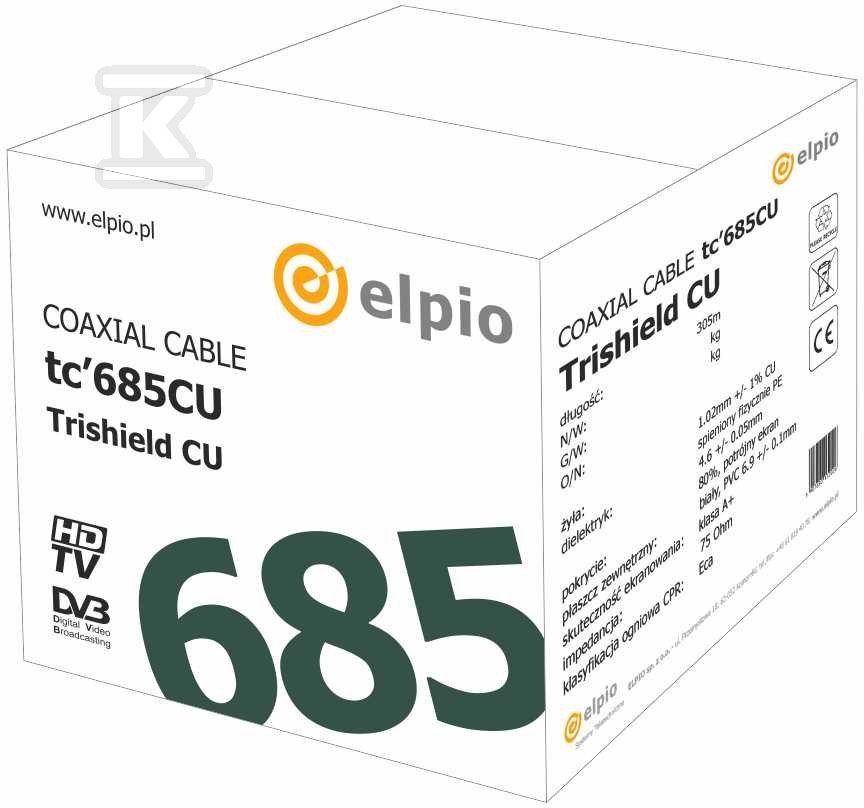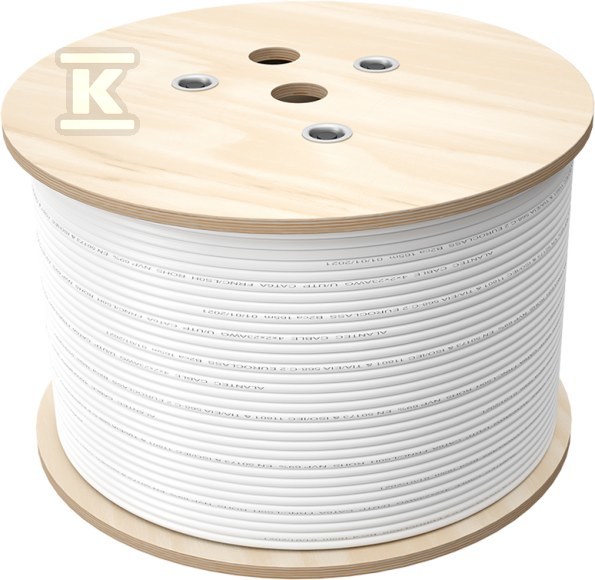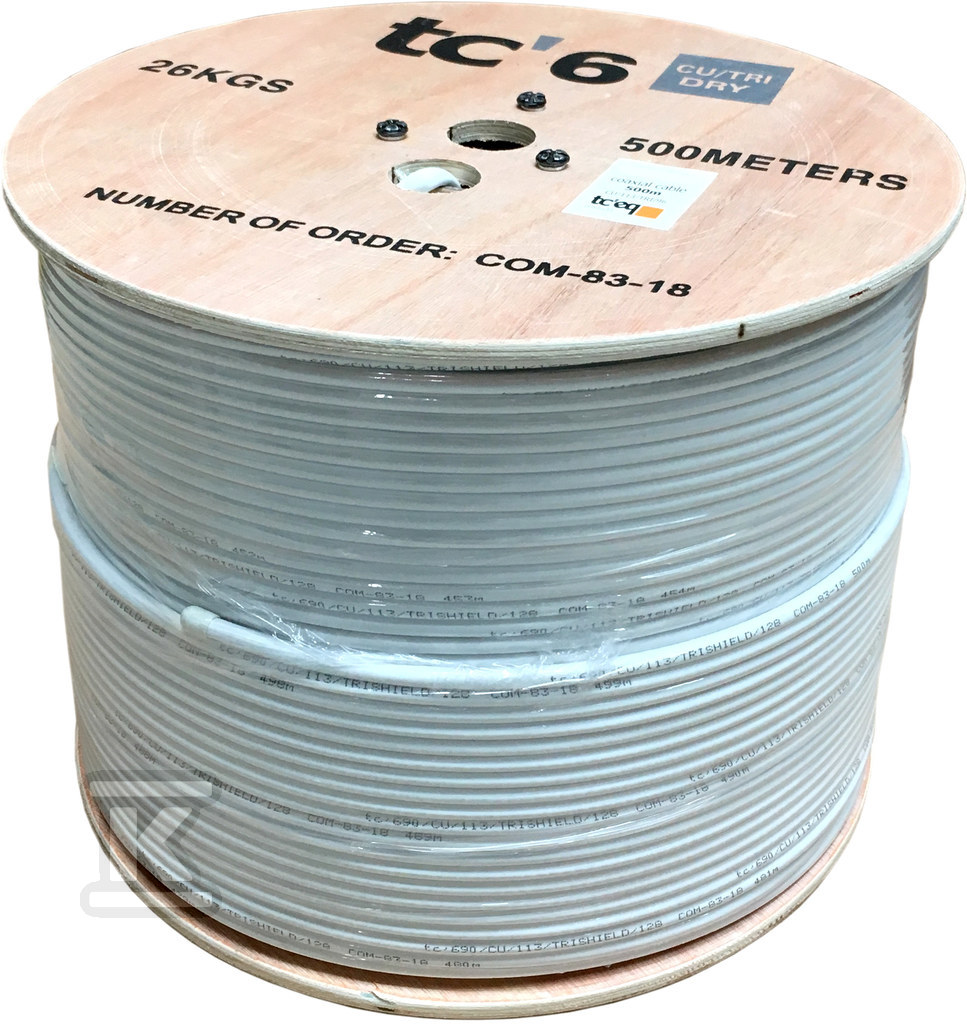Depending on the type of installation, type of cameras and transmission distance, different types of cables are used, such as coaxial cables, UTP/FTP twisted pairs, or fiber optic cables. Below is a detailed discussion of the parameters, applications and challenges related to the selection of cables for monitoring.

Check out the coaxial cables at the Onninen wholesaler
How to choose the technical parameters of monitoring cables?
 The selection of cables for a monitoring system depends on several basic factors. The first is the type of cameras and the transmission system, because analog CCTV systems require different cables than IP systems. The transmission distance is also important, because the greater the distance, the more important the properties of the conductor and the attenuation of the cable.
The selection of cables for a monitoring system depends on several basic factors. The first is the type of cameras and the transmission system, because analog CCTV systems require different cables than IP systems. The transmission distance is also important, because the greater the distance, the more important the properties of the conductor and the attenuation of the cable.
The power supply of the cameras must also be taken into account, especially in the case of PoE technology, where the cables must transmit both data and power. The environment in which the installation is to function will also be an important aspect - in outdoor installations, cables and wires must be resistant to moisture, UV radiation and temperature changes.
Coaxial cables
Coaxial cables, such as RG-59, are used in analog CCTV systems to transmit video signals at distances up to 300 m. They are characterized by low attenuation and the ability to transmit power in combo cables. For longer distances (up to 600 m), RG-6 cables are used. Due to the development of IP technology, coaxial cables are increasingly rarely chosen.
Telecommunication Cables – UTP/FTP Twisted Pairs
UTP/FTP twisted pairs are popular in IP monitoring systems, offering high throughput for HD and 4K image quality and PoE support. The standard transmission length is up to 100 m, and FTP cables with shielding reduce electromagnetic interference. For longer distances, signal amplifiers are used.
Fiber optic cables
Fiber optic cables enable transmission over long distances (over 100 m), offering no signal loss, resistance to interference and high throughput. They are used in extensive city and industrial monitoring systems.
Why is choosing the right monitoring cable so important?
 A properly selected cable for surveillance cameras has a direct impact on the quality of the transmitted image, system stability, installation safety and operating costs. A poorly selected cable can lead to loss of signal quality, interference or voltage drops, which negatively affects the efficiency of the system.
A properly selected cable for surveillance cameras has a direct impact on the quality of the transmitted image, system stability, installation safety and operating costs. A poorly selected cable can lead to loss of signal quality, interference or voltage drops, which negatively affects the efficiency of the system.
Cables with high mechanical resistance and appropriate insulation ensure reliable operation in various environmental conditions, including outdoor installations, where resistance to UV and moisture is crucial.
In addition, with the right choice of cables, the need for additional signal amplifiers or repeaters can be minimized, which often reduces installation and operating costs. For IP systems, it is recommended to use shielded twisted pair (FTP) and higher category cables, such as Cat 5e or Cat 6, especially in 4K systems.
How to prevent voltage drops in monitoring cables?
 Voltage drops are one of the most common problems in monitoring systems, especially with long cable runs. As a result, cameras can become unstable or turn off completely. To prevent this problem, it is worth:
Voltage drops are one of the most common problems in monitoring systems, especially with long cable runs. As a result, cameras can become unstable or turn off completely. To prevent this problem, it is worth:
- select the appropriate cable cross-section – the longer the transmission route, the larger the cross-section of the power supply wires should be (e.g. for sections over 50 m, avoid wires with too small a cross-section, such as 0.5 mm²);
- use combo cables – cables connecting signal and power cables allow for efficient energy transfer while minimizing losses;
- use PoE technology – transmission of power and data via a single Ethernet cable eliminates the need for additional power cables. For longer distances, it is worth using PoE switches with a higher voltage function;
- take into account losses at connections – improperly made connections or their excessive number may lead to additional voltage drops;
For large systems, it is worth using higher quality solutions, such as coaxial cables and low-attenuation twisted pairs.
Selecting the right cable for surveillance cameras is a key element in designing an effective and reliable system. Depending on the type of installation and transmission distance, you can choose between coaxial cables, twisted pair telecommunications or optical fibers. Particular attention should be paid to technical parameters such as attenuation, resistance to interference and the ability to transmit power. Using the right cables and ensuring that the connections are made correctly will help avoid problems related to voltage drops and signal losses.